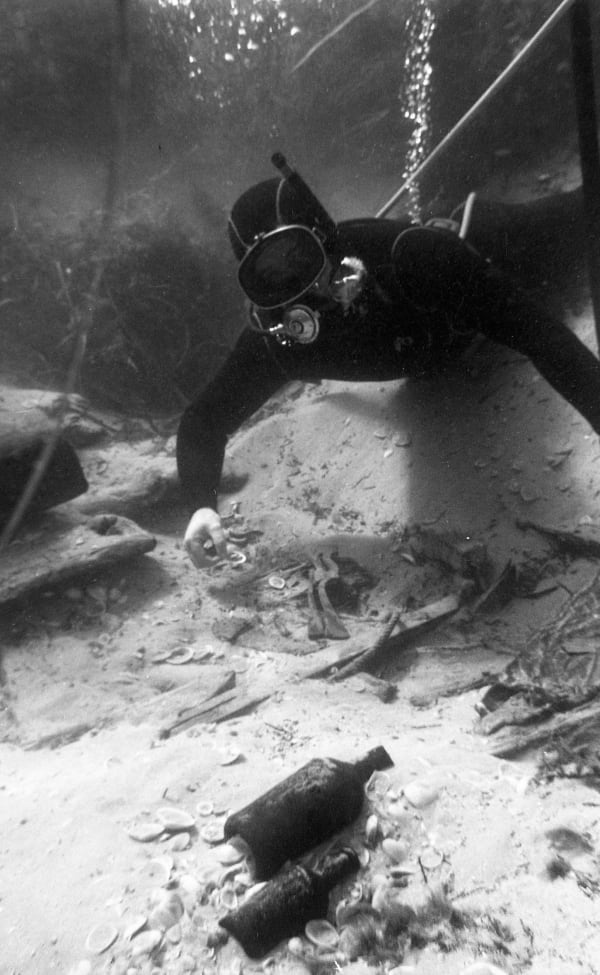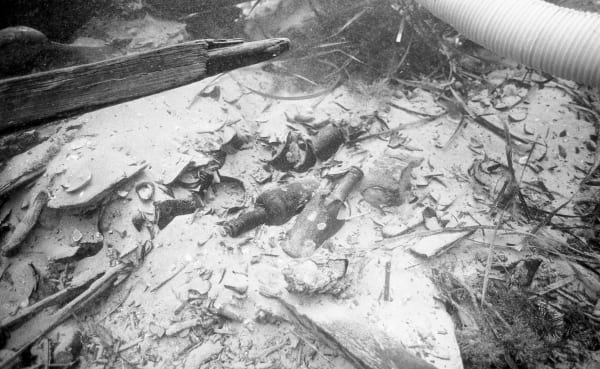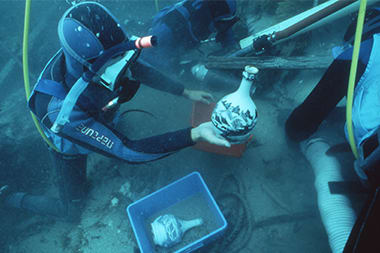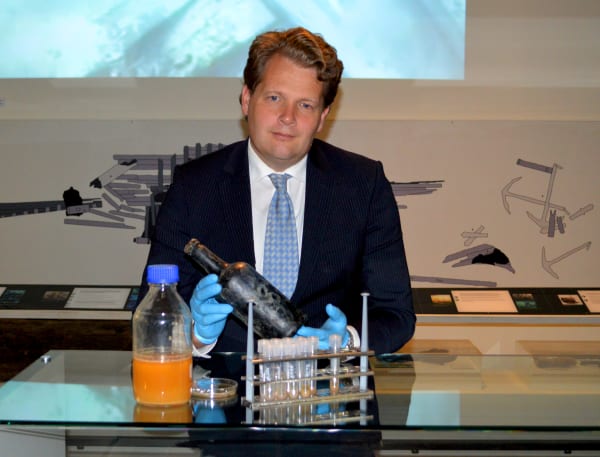It’s not often that a museum conservator helps bring a craft beer to market. But David Thurrowgood, conservator at the Queen Victoria Museum and Art Gallery in Launceston, finds himself in just such a position. And a unique beer it is.
The Wreck – Preservation Ale, has been brewed from yeast found in bottles of beer from a shipwreck collection at the museum. In 1796, the merchant ship Sydney Cove left Calcutta bound for the young colony it was named for. The holds were packed with goods of every description deemed essential for survival – tea, ceramics, rice and tobacco, and about 31,000 litres of beer, wine and spirits.
Unfortunately for the thirsty souls waiting in the settlement, the Sydney Cove ran aground on a sandbank at Preservation Island, south of Flinders Island in Bass Strait. As it slowly foundered, the crew salvaged what they could and set up a survivor’s camp, but much of the cargo sank to the seabed where it was to remain for 200 years.

Until, that is, it was recovered by a national Historic Shipwrecks team working with Mike Nash, a heritage officer with Parks and Wildlife Service and a maritime archaeologist.
Shipwreck material is notoriously difficult to keep, muses David Thurrowgood, when we meet at the museum. It continuously degrades once recovered, and artefacts that have been safe for centuries, held in suspension in icy waters, can be lost in a couple of decades. “That’s why there’s a trend in recovering certain examples of material and leaving the rest under the ocean.”
Selected items recovered from the Sydney Cove include the towering rudder and anchor, now part of the museum’s collection. And while moving artefacts from the wreck into new, purpose built storage in 2016, Thurrowgood came across bottles that clearly contained beer, and surmised that if the yeast was still alive, it could be brewed from.

The museum formed partnerships with the Australian Institute of Wine Research, which isolated the yeast in a quantity suitable for commercial brewing. It was then handed over to the James Squire brewery, which experimented with small batches before producing a porter style ale for limited release.
Thurrowgood has been consulted all the way on the development of the ale, and its replication of the type of drop which would have been brewed and supped in the colony in the late 18th century. Along with Haydon Morgan, head brewer at James Squire’s Malt Shovel Brewery, he has tasted it many times along the way. The result is a beer with “distinct spicy clove aroma produced by the yeast, balanced with sweet malt aromas and a touch of chocolate”.
There are few such fast projects in the museum world, one senses. The “world’s oldest beer” has gone from conception to product release in two years.

With degrees in chemistry and journalism, and a background as a conservator with the State Library of New South Wales and the National Galleries of Victoria and Australia, Thurrowgood sees more to it than the opportunity to brew ale from a 200-year-old yeast. To him, the potential for scientific discovery is where the true excitement lies.
The most obvious question is how did the yeast survive for so long in a bottle in the Bass Strait? It’s an unusual yeast, he says, one of a certain variety which forms a small clump, internal cells remaining alive, protected by those on the outside, which die.
It is believed to be the oldest surviving yeast microbe and has a genetic profile completely different from anything in use today, he says. “It opens up all sorts of ways for understanding scientifically what was happening a couple of hundred years ago, pre-industrial revolution – what was in people’s diet and what was used to make food, the microbiome of the day.”

It’s an unusual shipwreck, he adds, in the quantity of organic material which survived – peppercorns, grains of rice and tobacco leaves. “It’s unusual to get that level of preservation.” And there are more. In the museum’s storage rooms, he shows me a block of rough stone with a bottle embedded in it. It’s from the Asterope, a ship wrecked on the Hebe Reef at the head of the Tamar in 1883. Dark blue and narrow with a convex base, the bottle is intact, still holding a stash of alcohol within its secret sides.
To explore such a collection could be a lifetime’s work. The beauty of a story such as the ale brewed from the Sydney Cove is that it interprets the collection in a new way, says Thurrowgood. With museums nationally having their funding reduced regularly in the past decade, attracting commercial partnerships and drawing the public eye are ever more important. With that in mind, we must raise a bottle of The Wreck – Preservation Ale and thank those sailors for preserving the beer, and the science.

This article was first published in 2018 in issue #90 of Forty South magazine.
Mike Nash’s book, Sydney Cove: The History and Archaeology of an Eighteenth Century Shipwreck, is available for purchase here.
The Wreck – Preservation Ale is still available for purchase from selected bottle shops. See www.jamessquire.com.au for more details.
Fiona Stocker is a Tamar Valley-based writer, editor and keeper of pigs. She has published the books A Place in the Stockyard (2016) and Apple Island Wife (2018). More of her writing can be seen at fionastocker.com.








